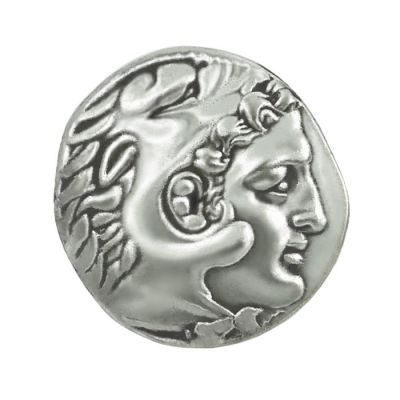Inspired by the ancient Greek civilization, with its rich culture, history and art, we created for you a silver-plated copy of the silver tetradrachm of Aetolia, with Hercules pictured on the obverse of the coin and the personalized Aetolia, sitting on a pile of shields, on the reverse. A great collectible for the admirers of the ancient Greek world, but also for coins collectors.
Diameter of the coin: 2,6 cm
Dimensions of the acrylic case: 5 cm x 6 cm x 5 cm
Every coin is offered in an acrylic case for protection and better presentation and gift packaging.
Take a look at the rest of the coins collection and the set of five silver-plated coins.
All prices include VAT.
The silver tetradrachm of Aetolia (220-189 BC), depicts the Delphic shrine dedicated to personalized Aetolia, armed, sitting on pile of Gallic shields on the obverse of the coin and the deified hero of the Aetolians - and all of the Greeks - Hercules, on the reverse.
The intriguing mintage of the Aetolians included gold, silver and bronze coins, that were used in order to serve the economic needs of the citizens of the Aetolian League, who used a common coin.
These coins' production coincided with the heyday of the political power of the Aetolians over the Central Greece ( 280-188 BC), and more specifically, since the year of the victory against the Galatians, up to 168 BC , when the Aetolians were conquered by the Roman legions.The original coin is at the Numismatic Museum in Athens.
The first coins were made of electrum in Asia Minor, an alloy of gold and silver in the late 7th BC century. In the front side of the coin were shown the respective symbols of the cities, the deities who protected the cities, mythical persons or regional products of the cities, visualizations that made recognizable their origin.
The precious metal, which was mainly silver, set the value of the coin, the small shape made it easy to carry and the symbol of each issuing authority was the guarantee of weight and authenticity. At the end of the 5th century BC, copper coins were produced, in order to be used for the small daily transactions.
No posts found















